1942 ‘Europe Air’ Bomber Map - "Napoli" - Bombing of Naples
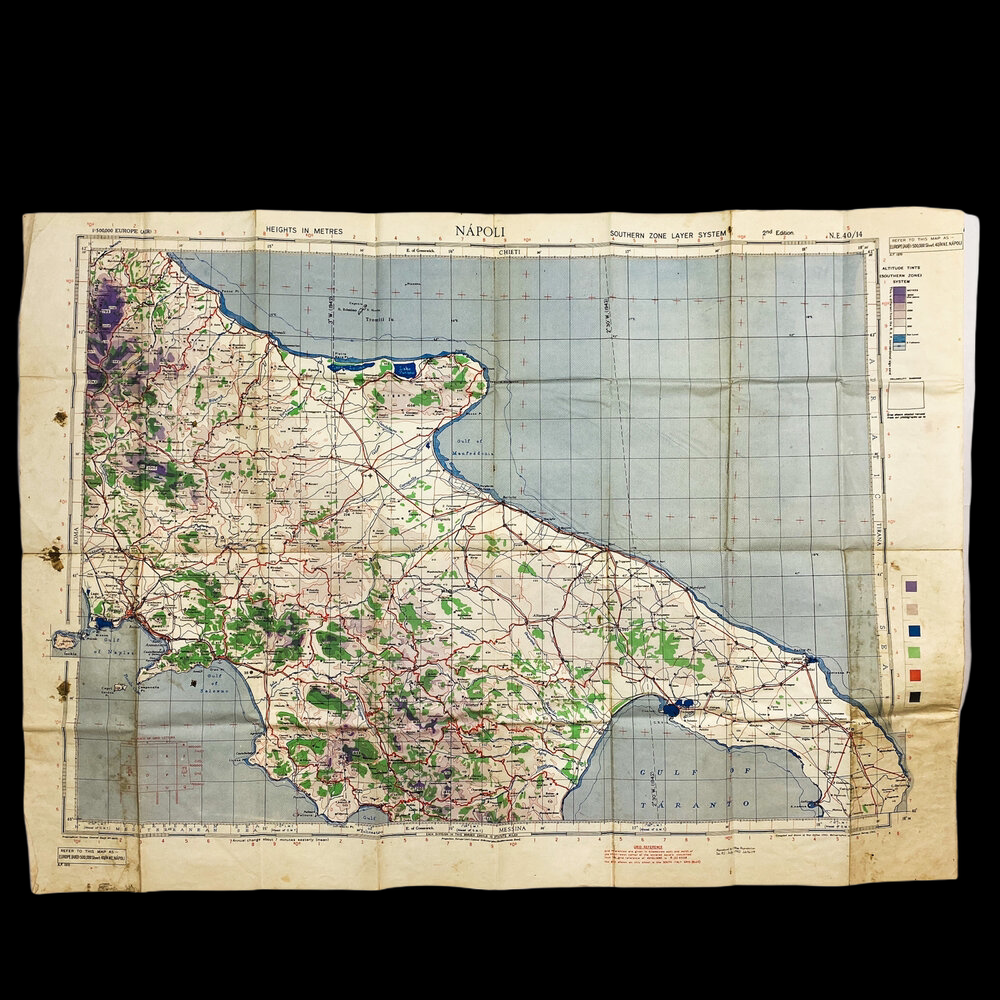














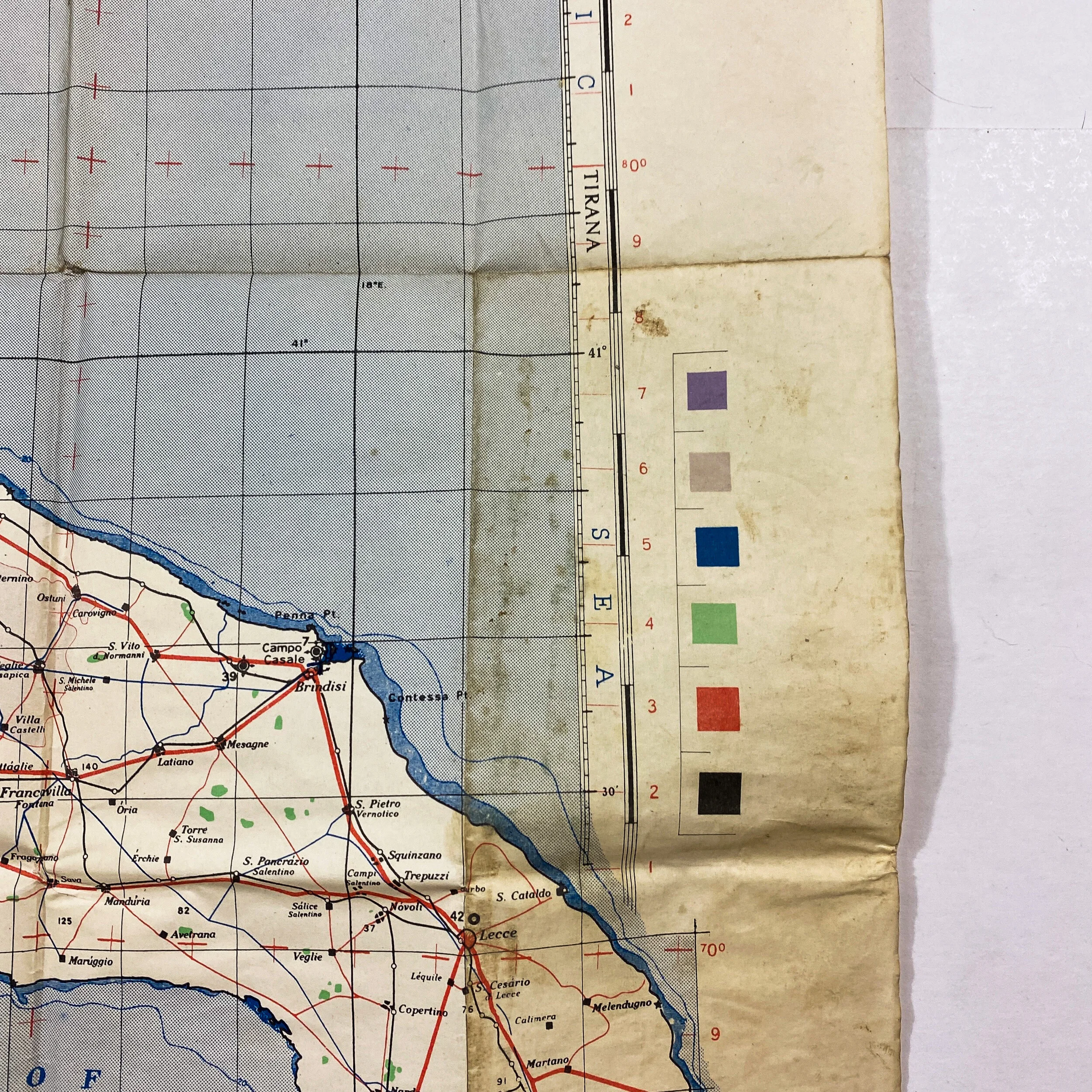







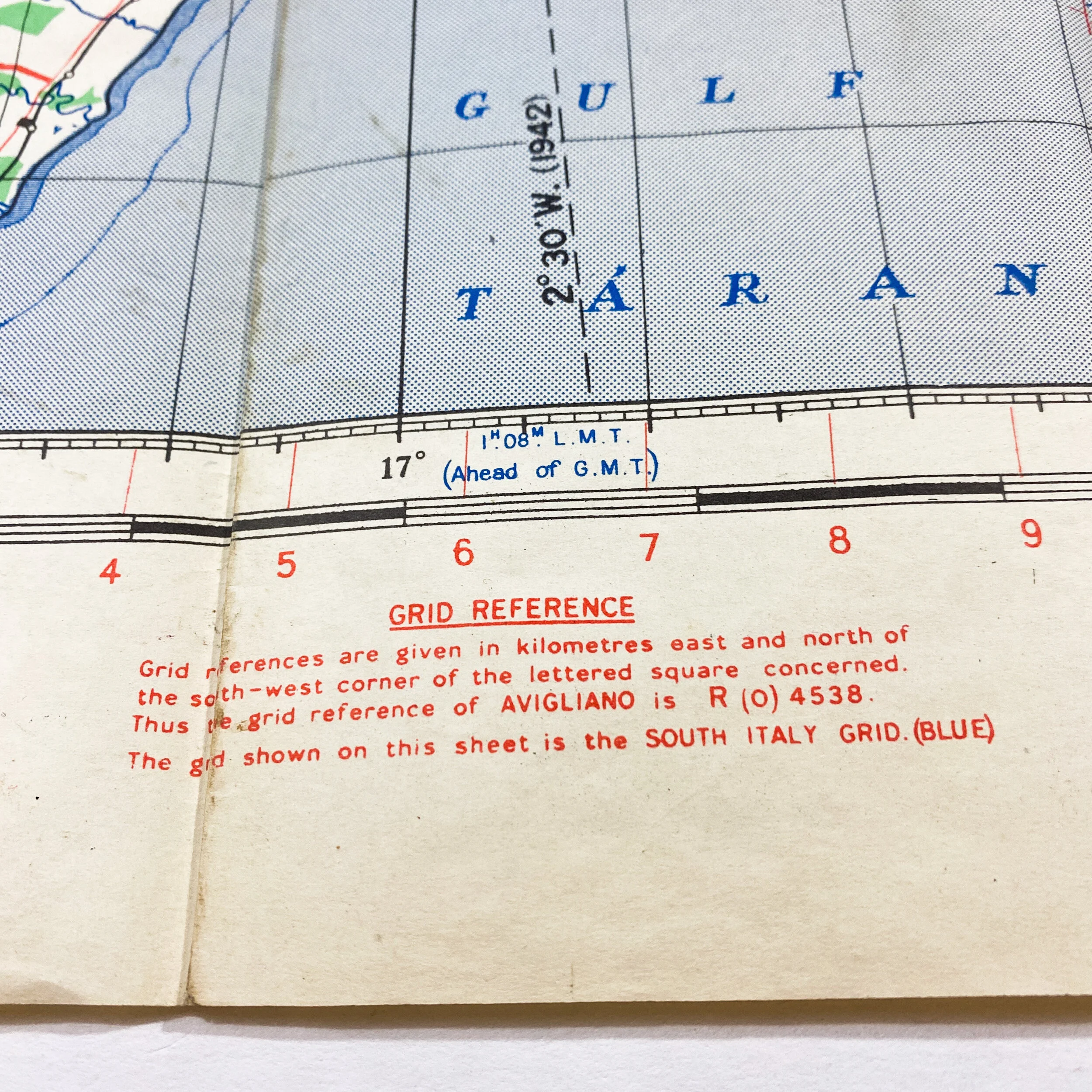
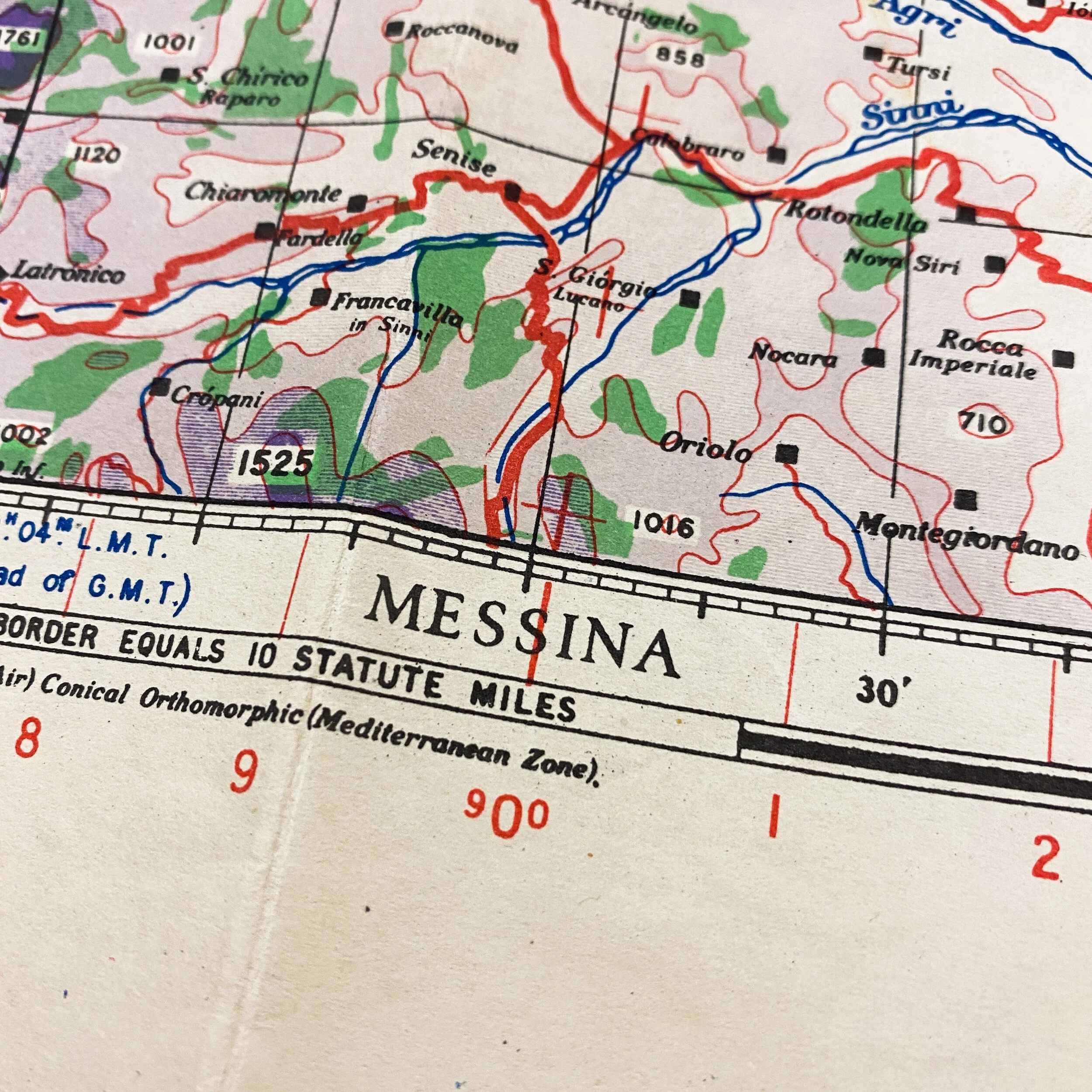
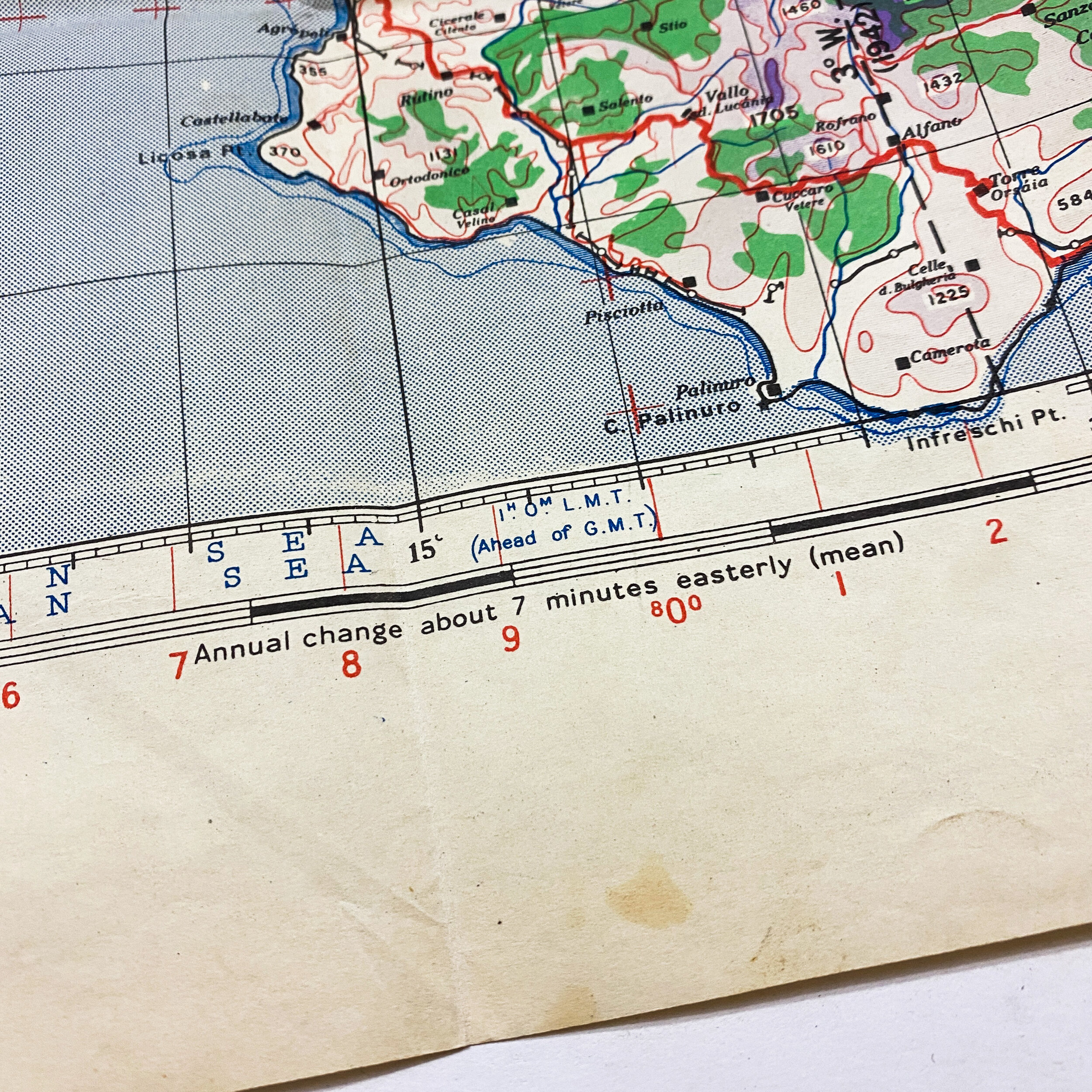

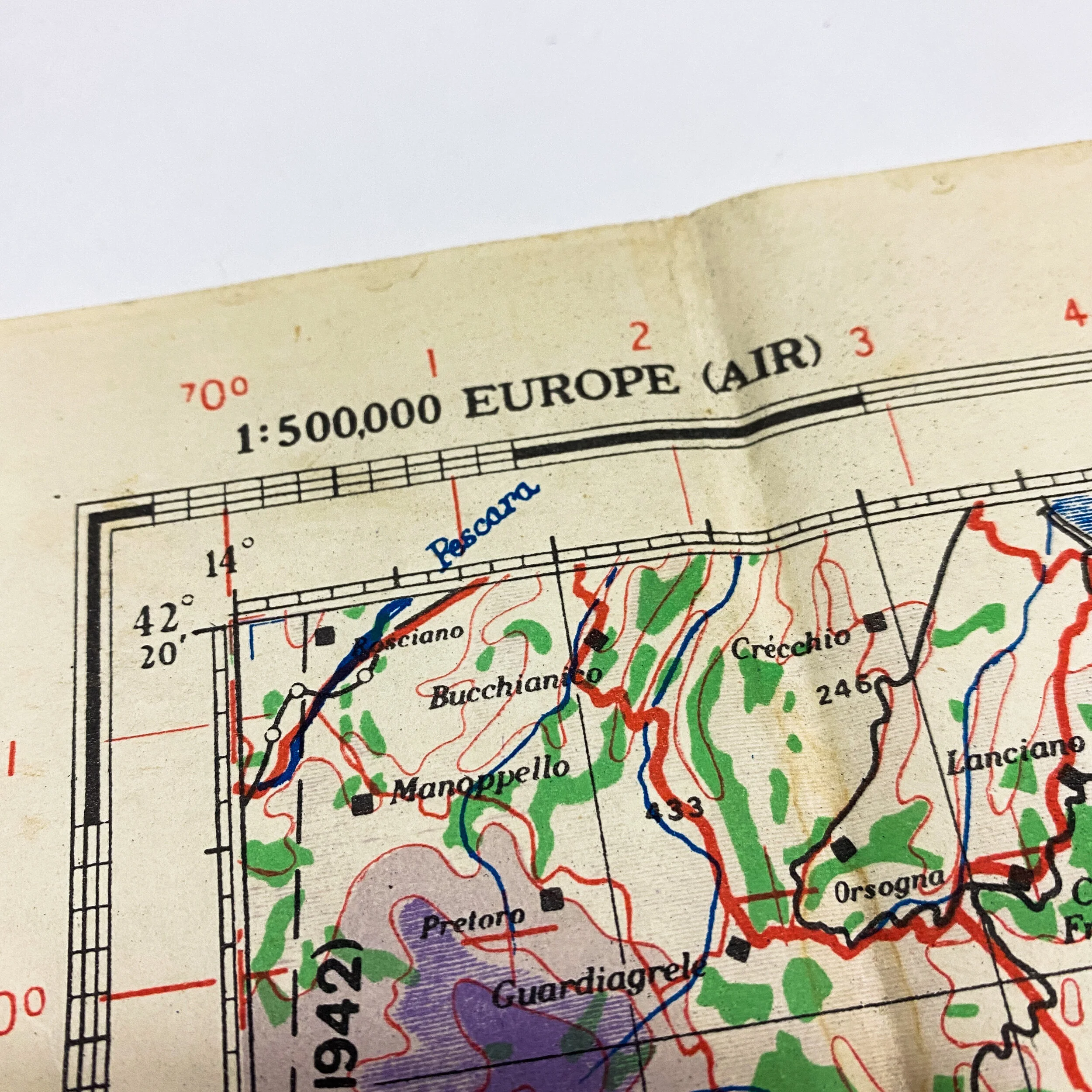

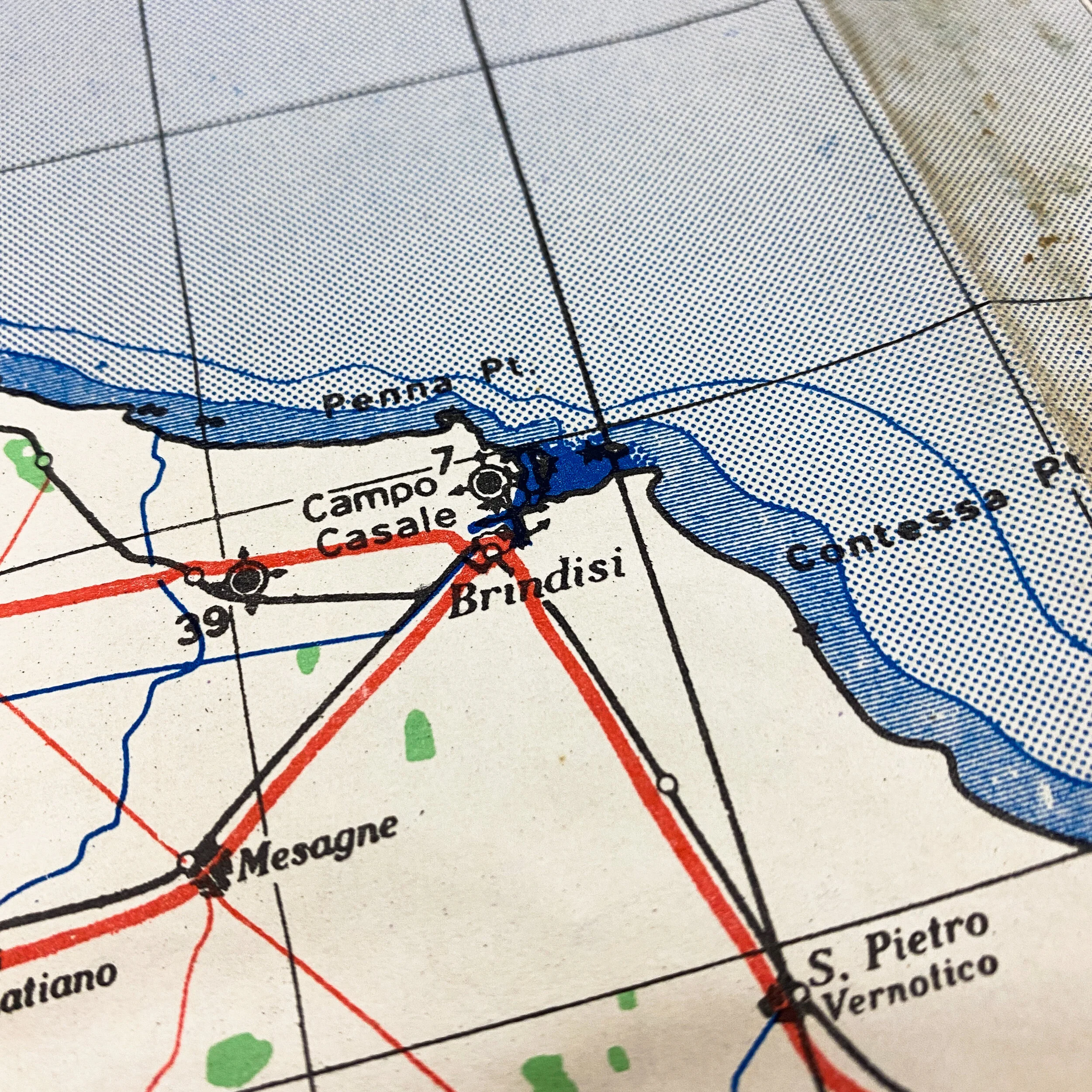


1942 ‘Europe Air’ Bomber Map - "Napoli" - Bombing of Naples
Size: 33.5 x 24 inches
This heavily used WWII ‘Europe Air’ map titled “Napoli is a 2nd Edition map compiled and drawn by War Office in 1941. This map was later revised and edited by the Heliograph at Ordnance Survey in 1942. Used by Allied bombers during WWII, this map shows the geographical landscape of the Italian city of Naples suffered approximately 200 air raids by the Allies from 1940 to 1944; only Milan was attacked more frequently. Almost all of the attacks — a total of 181 — were launched in the first nine months of 1943 before the Four days of Naples and the Allied occupation of the city at the beginning of October. Estimates of civilian casualties vary between 20,000 and 25,000 killed. This map along with other similar maps of the sort were carried by navigators and bombardiers of Air Force bomber crews flying in B-17 flying fortresses and was used in bombing raid of German targets. The largest raid was on 4 August 1943, by 400 American Boeing B-17 Flying Fortress aircraft of the Northwest African Strategic Air Force (NASAF) which targeted the Axis submarine base at Naples. The Church of Santa Chiara was destroyed in this raid but was later rebuilt. The Santa Maria di Loreto hospital was also destroyed in the bombing of Naples. The map itself shows heavy use, as it was most likely carried on multiple missions. While it is not known who the man was who carried this map in combat, what his position was on the aircraft, or what squadron he was in, it still shows an important aspect of WWII history. This map is one of three obtained that were carried by the same WWII veteran (Sicily, Napoli, and Constantine). Through research and study a possible squadron could be possibly identified based on the these 3 maps.
Air Raids on Naples in WWII:
Naples was heavily bombed in WW2. The city was struck for the first time on November 1, 1940, by RAF and Fleet Air Arm Bristol-Blenheim twin-engine light bombers (photo, left) flying out of Malta. It was part of a coordinated British attack against Naples and Brindisi. In Naples, the primary targets were the port facilities at the extreme eastern end of the Port of Naples as well as the rail, industrial and petroleum facilities in the eastern part of the city and the steel mill to the west, in Bagnoli.
The attacks were part of a broader British campaign against the Italian armed forces in the southern Mediterranean. Although the British focus in the summer and autumn of 1940 was primarily on the home front—the great air war (The "Battle of Britain") against the Luftwaffe—Britain had an important second war going in the south. Italy had declared war on June 10 against Britain and France; then, Italy invaded Egypt on September 13 from the Italian colony in Libya, and then invaded Greece on October 28. A British failure to meet Italian moves in the Mediterranean might have led to Axis control of the eastern Mediterranean, including loss of the Suez Canal and the British air and naval facilities on Malta and in Egypt.
The initial air strikes against Naples were strategic and effective in disrupting the Italian war machinery in the south. [The strikes against southern Italy included the bold—and unprecedented—attack on November 11, 1940, against the large Italian naval facility in Taranto. British Fleet Air Arm planes from the aircraft carrier Illustrious, 170 miles out in the Ionian sea, successfully attacked the port, devastating the Italian fleet. That attack was the first major victory for naval air power in the history of warfare and has been called "the blueprint for Pearl Harbor".] The air-raids were coordinated to assist the British desert war against Italian forces in North Africa, an offensive that would begin in December, 1940. British air raids on Naples were night-time raids that lasted until November of the following year. These raids were crucial to the British effort to interrupt Axis movements of men and material to the war in North Africa. A report filed to the New York Times on October 27, 1941, said, in part:
“The bombing of Naples port means that the British are now hammering at both ends as well as the middle of the Axis supply line to Africa. Eighty percent of the Axis supplies reinforcing the troops reaching the Libyan front is sent via Naples…It is through Naples also that German troops, who are now the only really effective fighting force the British need to consider in this wing of the Middle East, are funneled to transports en route to Libya…The two-ton bombs which the R.A.F. is now dropping on Naples are terrible missiles, the most terrible of any the powers have yet developed…
The attacks trailed off in 1942, when the British attacked Naples only six times in the entire year. The air strikes were intended to be against precise targets and, revisionist historians to the contrary, can in no way be described as random "terror" raids against a civilian population, much less "carpet bombing" of the entire city.”
Heavy raids started with the American bombings on 4 December 1942. They involved great numbers of four-engine B-24 "Liberator" long-range bombers from the US 9th Air Force flying from bases in North Africa (and, later, from Sicily). The initial attack killed 900 people. The raids were in the daylight and were massive. The raids lasted until the armistice with Italy in September, 1943.